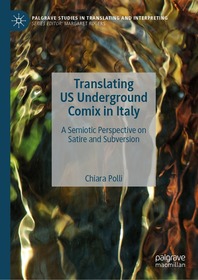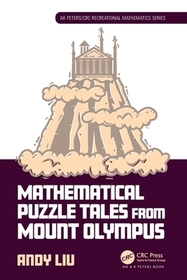
Translating US Underground Comix in Italy
A Semiotic Perspective on Satire and Subversion
Series: Palgrave Studies in Translating and Interpreting;
- Publisher's listprice EUR 128.39
-
53 249 Ft (50 714 Ft + 5% VAT)
The price is estimated because at the time of ordering we do not know what conversion rates will apply to HUF / product currency when the book arrives. In case HUF is weaker, the price increases slightly, in case HUF is stronger, the price goes lower slightly.
- Discount 20% (cc. 10 650 Ft off)
- Discounted price 42 600 Ft (40 571 Ft + 5% VAT)
Subcribe now and take benefit of a favourable price.
Subscribe
53 249 Ft

Availability
printed on demand
Why don't you give exact delivery time?
Delivery time is estimated on our previous experiences. We give estimations only, because we order from outside Hungary, and the delivery time mainly depends on how quickly the publisher supplies the book. Faster or slower deliveries both happen, but we do our best to supply as quickly as possible.
Product details:
- Edition number 2025
- Publisher Springer Nature Switzerland
- Date of Publication 17 April 2025
- Number of Volumes 1 pieces, Book
- ISBN 9783031728853
- Binding Hardback
- No. of pages359 pages
- Size 210x148 mm
- Language English
- Illustrations XXI, 359 p. 19 illus. Illustrations, black & white 654
Categories
Long description:
"
This book analyses 1960s-1970s US underground comix, a ‘counterculture’ art form that satirised mainstream values and taboos. The author observes comix in their multimodal components in the original English-language versions and in their Italian translations by unpacking the several layers of verbal and visual meaning-making. She then goes on to scrutinise translation and resemiotisation processes, including modifications, mitigations, and omissions, encompassing socio-historical and cross-cultural perspectives. The book argues that translation, meant to bridge two (counter-)cultures, served as a gatekeeper instead, zooming in on certain themes, while inadvertently overlooking or purposefully manipulating others, with an outcome close to censorship. The volume is divided into nine chapters. Chapter 1 summarises the aims and scope of the volume. Chapter 2 introduces comix as a subversive phenomenon. Chapter 3 illustrates the theoretical and methodological framework of analysis, based on semiotics and multimodality. Chapter 4 presents the corpus of Italian translations, which includes works translated between 1968 and 2022 by both mainstream and alternative publishers. In Chapters 5-8, Italian translations of comix dealing with such controversial themes as sex, drugs, political struggle, and religion are analysed, with qualitative observations of several translations of the same comix provided to highlight changing times, cultural frames, ideologies, editorial policies, and target audiences. Chapter 9 discusses the findings of these observations and maintains that, as a recursive translation strategy, seditious contents were mitigated, trivialised, or censored by adopting light-hearted frames so that potentially problematic contents could be left out. With its linguistic, translational, and intercultural analyses, this volume will be useful for researchers of linguistics, semiotics, translation, and comics studies.
" MoreTable of Contents:
Chapter 1: Introduction.- Chapter 2: Comics, Comix and Satire: The Language of Subversion.- Chapter 3: Translating Comics: Theoretical Considerations.- Chapter 4: Underground Comix in Italy: Corpus Design.- Chapter 5: Lust in Translation between Omission and Banalisation.- Chapter 6. Addiction and Additions: Translating the Drug Culture in Italy.- Chapter 7. Rewriting Political Struggles: Localisation and (Counter-)Cultural Filtering.- Chapter 8. Insights into Religious Satire and Blasphemous Translations.- Chapter 9. Concluding Remarks.
More







